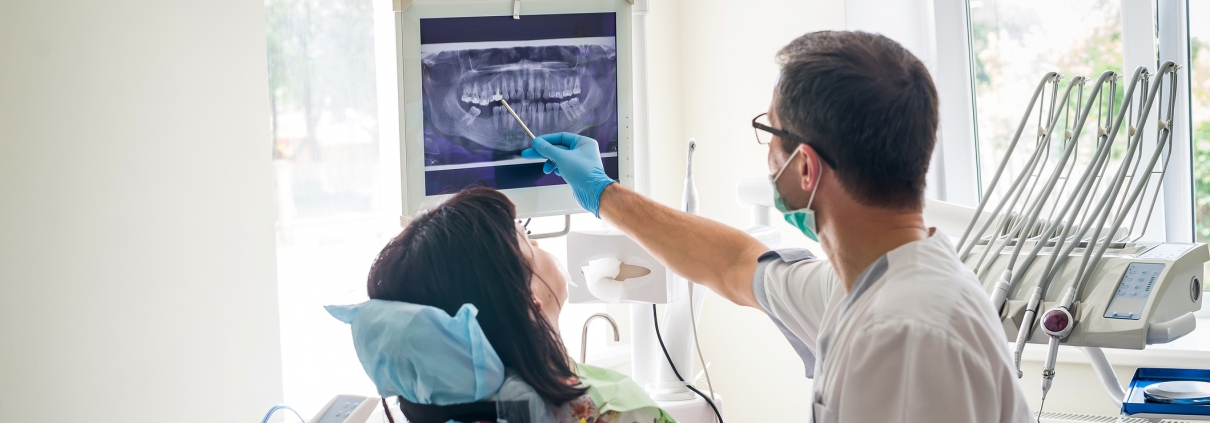The Role of Technology in Modern Dentistry
Innovations for Better Oral Health
Modern dentistry has undergone a remarkable transformation, thanks to rapid advancements in technology. From enhanced diagnostic tools to state-of-the-art treatment techniques, technology has made dental care more efficient, comfortable, and effective for patients. In this article, we explore some of the groundbreaking innovations shaping the future of oral health and how they are revolutionizing the field of dentistry.
Digital Imaging and Diagnostics
Traditional X-rays have been largely replaced by digital imaging, which provides clearer and more detailed images of the teeth, gums, and jaw. Digital X-rays use less radiation, making them safer for patients, and the images can be instantly displayed on a computer screen for better analysis. Another game-changer in diagnostics is cone beam computed tomography (CBCT). This 3D imaging technology allows dentists to visualize the oral cavity in three dimensions, enabling precise treatment planning for procedures like dental implants, orthodontics, and root canals.
In addition to imaging, intraoral cameras are becoming a standard tool in dental practices. These small, pen-sized cameras capture high-resolution images of the inside of the mouth, helping dentists detect problems such as cavities, cracks, and gum disease early on. Patients can also see what the dentist sees, promoting better understanding and communication.
Laser Dentistry
Lasers have revolutionized many aspects of dental care by offering a minimally invasive alternative to traditional procedures. Laser dentistry is used for a variety of treatments, including:
- Gum Disease Treatment: Lasers can effectively remove infected tissue and bacteria while promoting faster healing.
- Cavity Treatment: Lasers can remove decayed portions of a tooth with greater precision, preserving more healthy tissue.
- Teeth Whitening: Laser technology enhances the effectiveness of whitening treatments by accelerating the bleaching process.
Laser dentistry is often less painful, reduces the need for anesthesia, and minimizes bleeding and swelling, leading to quicker recovery times.
CAD/CAM Technology
Computer-Aided Design and Computer-Aided Manufacturing (CAD/CAM) technology has transformed the way dental restorations are created. Dentists can now design and fabricate crowns, bridges, veneers, and inlays/onlays in a single visit. Using digital impressions and 3D software, the dentist creates a precise restoration that is milled from a block of ceramic or composite material. This eliminates the need for temporary restorations and multiple appointments, saving time for both the patient and the dentist.
Teledentistry
Teledentistry has emerged as a vital tool for improving access to dental care, especially in remote or underserved areas. Using video conferencing and digital communication tools, dentists can provide consultations, monitor treatment progress, and offer follow-up care without the need for in-person visits. This technology became particularly important during the COVID-19 pandemic, allowing patients to receive essential care while maintaining social distancing.
3D Printing
3D printing is revolutionizing the way dental appliances and restorations are made. With this technology, dentists can create highly accurate models, crowns, bridges, dentures, and even orthodontic aligners in a fraction of the time compared to traditional methods. 3D printing not only speeds up the process but also reduces costs, making dental care more affordable for patients.
Artificial Intelligence (AI)
Artificial intelligence is beginning to play a significant role in modern dentistry. AI-powered software can analyze dental images to identify cavities, gum disease, and other issues with incredible accuracy. These systems assist dentists in diagnosing conditions early, improving treatment outcomes. AI is also being used in practice management, helping dentists predict patient needs, optimize scheduling, and streamline administrative tasks.
Robotic-Assisted Dentistry
Robotic technology is making its way into dental surgeries, enhancing precision and reducing human error. Robots are being used for procedures like dental implant placement, where accuracy is critical. These systems use advanced algorithms and 3D imaging to guide the dentist or perform parts of the procedure autonomously, ensuring optimal results.
Smart Dental Devices
The rise of smart technology has introduced devices like smart toothbrushes and oral health trackers. These gadgets connect to mobile apps, providing real-time feedback on brushing techniques and oral hygiene habits. They are particularly beneficial for encouraging children and adults to maintain better oral care routines.
Conclusion
The integration of technology into modern dentistry has significantly improved the quality of care patients receive. From faster and more accurate diagnoses to less invasive treatments and enhanced patient education, these innovations are transforming the dental experience. As technology continues to evolve, we can expect even more breakthroughs that will make oral health care more effective, accessible, and personalized. Whether it’s through digital imaging, AI, or 3D printing, the future of dentistry is bright, promising healthier smiles for everyone.

